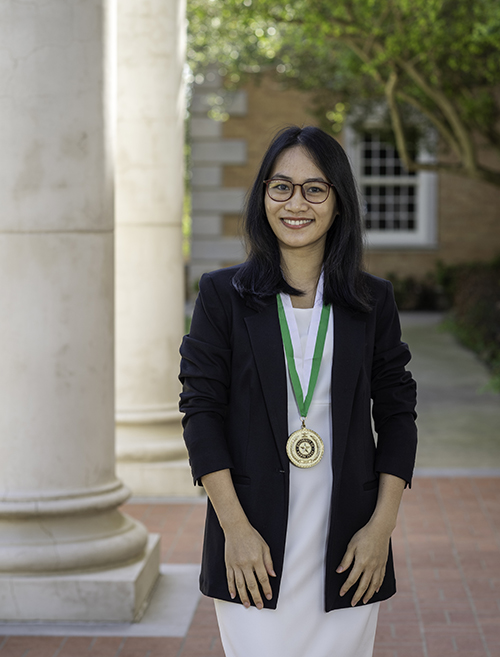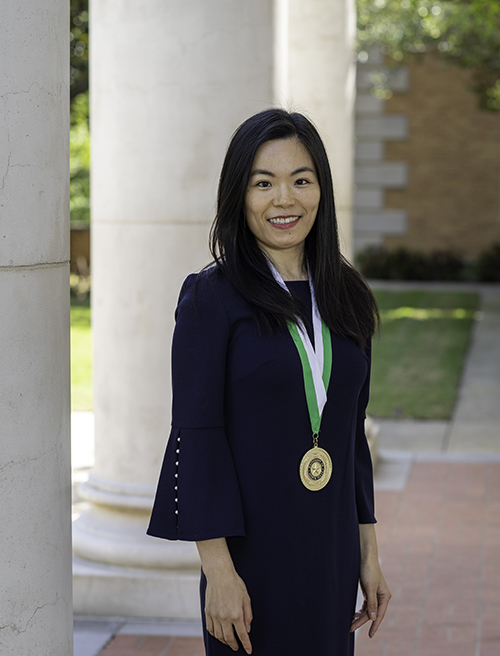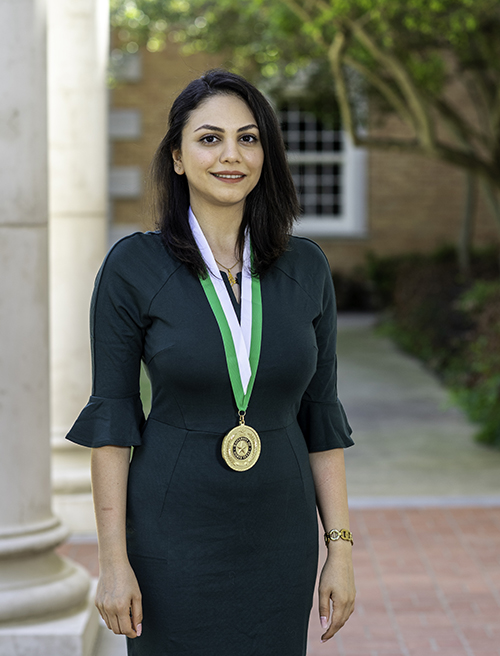3MT® Competition
To participate in the 2023 Fall 3MT® Competition, each contestant must provide a pre-recorded video presentation for consideration as part of their 2023 entry. The TGS 3MT® Event Coordinator will contact the contestant and provide additional details about the 3MT® preliminaries (Virtual).
Video submissions are important to ensure the 3MT® competition can pivot quickly to a virtual format should Covid-19 restrictions be implemented; this does not prevent the live event from being planned to celebrate the exceptional research conducted by our MFA, EdD, and PhD candidates.
3MT® Eligibility
Active graduate students who have defended their dissertation proposal (including candidates whose dissertations are under submission) are eligible to participate in the fall 3MT® competition.
3MT® Preliminary Process + Video Submission
To compete, submit the registration form found on the tgs.unt.edu/3mt website. The 3MT® Event Coordinator will provide instructions to competitors regarding their preliminary round, the video recording and submission process, and whether it is planned as a live or virtual event.
Each competitor will prepare, record, and edit their 3MT® presentation (using the "cameo" feature in PowerPoint) and send the recording to the graduate school for consideration. Each school/department has the opportunity to promote its 3MT® competitors.
(Live or Virtual) Members of the UNT judging panel will review all presentations (score using 3MT® scoring sheets). If the preliminary rounds are virtual, the graduate school will share the contestants’ videos with the judging panel and then conduct a Zoom meeting to discuss the video presentations with competitors. If the preliminary rounds are live, contestants will present live to the judging panel. The judges will provide each candidate feedback. In both scenarios, the contestants will receive an email alerting them to which twelve contestants may advance to the final round of the UNT 3MT®.
Please note: The judging panel will not judge the presentation based on the video/recording quality or editing capabilities (optional inclusions). Judging will focus on the contestant’s ability to communicate their research to a non-specialist audience and the 3MT® PowerPoint slide.
Finals
Immediately after the preliminary rounds, the chosen 3MT® finalists may participate in a photo opportunity hosted on the UNT Denton campus to receive a professional photograph. The graduate school will produce social media graphics and promote the final competition, and the People’s Choice vote. Each school/department may promote their 3MT® competitors for People’s Choice. During this time, contestants may use the feedback received during the preliminary round to revise and edit their presentation slide and speech before the live audience at the Lyceum (if COVID restrictions allow). A new judging panel of community members is convened for the final round.
Judging Criteria
At every level of the competition, each competitor will be assessed on the following judging criteria. Each criterion is equally weighted and has an emphasis on the audience.
Comprehension and Content
- Did the presentation provide an understanding of the background and significance to the research question being addressed while explaining the terminology and avoiding jargon?
- Did the presentation clearly describe the impact or results of the research?
- Did the presentation follow a clear and logical sequence?
- Was the dissertation topic, research significance, results, and outcomes communicated in a language appropriate to a non-specialist audience?
- Did the presenter spend adequate time on each element of their presentation? Or did they elaborate too long on one aspect or rush other details?
Engagement and Communication
- Did the oration make the audience want to know more?
- Was the presenter careful not to trivialize or generalize their research?
- Did the presenter convey enthusiasm for their topic?
- Did the orator have sufficient stage presence, eye contact, vocal range?
- Did the presenter maintain a steady pace and have a confident stance?
- Did the PowerPoint slide enhance the presentation – was it clear, legible, and concise?




